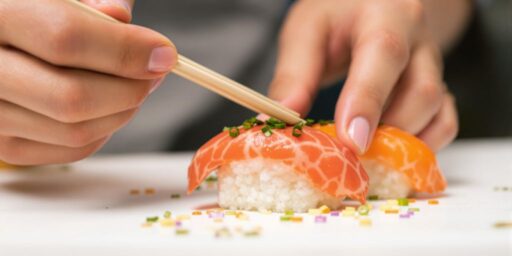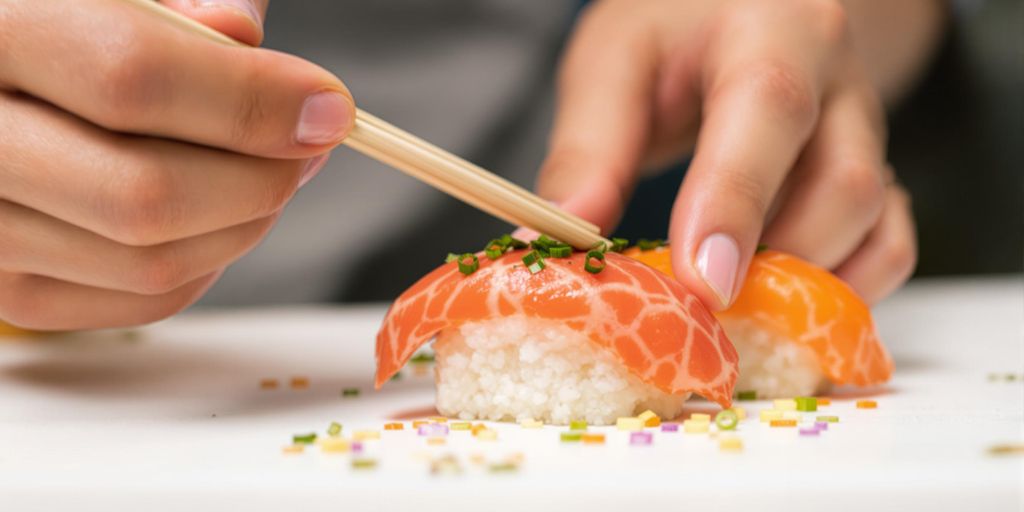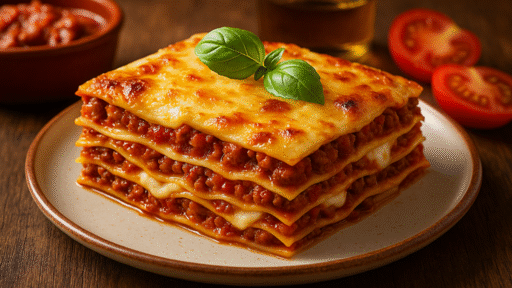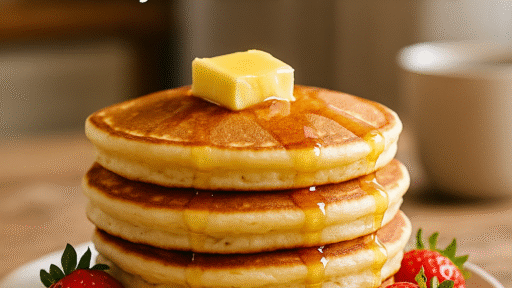Learn how to use chopsticks like a pro with tips on grip, etiquette, and cultural insights. Master the art today.
Chopsticks, those two simple sticks, can seem a bit tricky at first, right? But once you get the hang of it, they’re super handy for enjoying your favorite Asian dishes. Whether you’re a newbie or just want to polish your skills, learning how to use chopsticks like a pro is totally doable. Let’s dive into some tips and tricks to make you a chopstick master.
Key Takeaways
- Chopsticks are more than just utensils; they hold cultural significance across Asia.
- Choosing the right chopsticks can improve your dining experience.
- Proper grip is essential for using chopsticks effectively.
- Practicing regularly can help you overcome challenges like handling slippery foods.
- Understanding chopstick etiquette is important to avoid unintentional faux pas.
Understanding the Basics of Chopstick Use
The Anatomy of Chopsticks
Chopsticks might seem simple, but there’s more to them than meets the eye. These utensils typically come in pairs and are often made from wood, bamboo, metal, or plastic. Each material offers a different feel and function. For example, bamboo chopsticks are lightweight and eco-friendly, while metal ones are durable and often used in Korean dining. The ends of chopsticks can also vary—some are rounded, while others are square or pointed, each design catering to specific types of food.
Choosing the Right Chopsticks for You
Picking the right chopsticks can enhance your dining experience. If you’re new to using chopsticks, you might want to start with wooden or bamboo ones, as they provide a better grip. Metal chopsticks, while stylish, can be slippery and challenging for beginners. Consider the length and thickness too; longer chopsticks are often used in Chinese cuisine for communal eating, while shorter ones are favored in Japanese settings for precision.
The Cultural Significance of Chopsticks
Chopsticks are not just eating tools; they hold cultural significance across Asia. In China, using chopsticks is a skill taught from a young age, symbolizing tradition and family unity. Japanese chopsticks are often shorter and pointed, reflecting the country’s emphasis on precision and presentation in cuisine. Meanwhile, Korean chopsticks, typically made of metal, represent modernity and practicality. Understanding these nuances can make you a more mindful and respectful diner.
Mastering the use of chopsticks is not just about technique, it’s about appreciating the cultural tapestry they represent.
Mastering the Grip: How to Hold Chopsticks Correctly
Step-by-Step Guide to Holding Chopsticks
Getting the grip right is the first step to using chopsticks like a pro. Here’s a simple guide to help you start:
- Hold the first chopstick like a pen. Position it so that the thicker end rests between your thumb and index finger, while the tip is supported by your ring finger. This chopstick remains stationary.
- Position the second chopstick by holding it with your index and middle fingers, much like you would a pencil. This chopstick is the one you’ll move to grab food.
- Practice opening and closing the chopsticks. Use your index and middle fingers to open and close the chopsticks, starting with larger items like sushi or vegetables. As you gain confidence, move on to smaller, more delicate items.
Remember, the key is flexibility. A loose grip allows for better control and precision, enabling you to adjust as needed.
Common Mistakes to Avoid
As you practice, keep an eye out for these common pitfalls:
- Tight Grip: Holding chopsticks too tightly can restrict movement. Aim for a relaxed grip for smoother motions.
- Using Both Hands: Stick to using one hand to develop better coordination and precision.
- Reaching Too Far: Keep food close to your plate and bring the chopsticks to the food instead of reaching.
Tips for Improving Your Grip
Improving your chopstick skills takes practice and patience. Here are a few tips to help you along the way:
- Start with larger items that are easier to pick up, like sushi rolls or thick vegetables.
- Challenge yourself by picking up smaller, slippery foods like noodles or rice.
- Incorporate chopsticks into daily life by using them for cooking or serving dishes, which helps build familiarity and skill.
For more detailed steps and essential tips on mastering chopstick use, explore further resources and guides.
Chopstick Etiquette: Do’s and Don’ts

Proper Table Manners with Chopsticks
Using chopsticks correctly involves more than just mastering the grip. There are cultural etiquettes tied to their use, especially in Asian countries. One key rule is to avoid sticking chopsticks upright in a bowl of rice, as it resembles a funeral rite. Instead, when not in use, place them horizontally on your bowl or plate. Crossing chopsticks is also considered disrespectful, as it symbolizes death.
Cultural Differences in Chopstick Etiquette
Different countries have unique traditions when it comes to chopstick use. For instance, in Japan, it’s impolite to pass food from one pair of chopsticks to another, as this action is reminiscent of funeral practices. In China, tapping chopsticks on the bowl is a no-no, as it mimics the behavior of beggars. Understanding these nuances can help you navigate dining situations with ease.
Respectful Dining Practices
To dine respectfully, avoid using chopsticks to point at people or objects. It can be perceived as rude. Also, refrain from using them to spear food unless absolutely necessary. Instead, practice picking up food gently. If you need to set them down, use a chopstick rest if available, or place them neatly on a napkin. Lastly, never lick your chopsticks, as this is considered unhygienic and disrespectful.
Practicing with Purpose: Exercises to Enhance Your Skills

Fun Exercises for Beginners
Getting the hang of chopsticks can be a real game-changer, and it doesn’t have to be boring. Try these fun exercises to make your practice sessions more engaging:
- Pick Up Small Objects: Start with small, lightweight items like marshmallows or jelly beans. This helps you get a feel for the grip and motion.
- Time Challenges: Set a timer and see how many items you can pick up in a minute. Make it a friendly competition with friends to boost your speed and control.
- Food Textures: Experiment with different textures. Begin with firm items like carrot sticks, then move on to slippery foods like noodles or rice. This variety will not only improve your skills but also make your practice sessions delicious!
- Cooking Practice: Use chopsticks while cooking. Stir fry your veggies or serve a salad. It’s a fun way to incorporate practice into your daily routine.
- Create a DIY Game: Make a game out of it. For instance, try a “chopstick relay” where you pass objects down a line using chopsticks. This will not only develop your skills but also add some fun to the mix.
Advanced Techniques for Proficiency
Once you’ve got the basics down, it’s time to step up your game. Here are some advanced techniques to try:
- Slippery Foods: Challenge yourself with slippery foods like noodles or small pieces of fruit. This will test your dexterity and control.
- Precision Practice: Try picking up small, delicate items like grains of rice or tiny beads. This will hone your precision and grip strength.
- Weighted Chopsticks: For an extra challenge, use weighted chopsticks. This can help build muscle memory and improve your overall technique.
Incorporating Chopsticks into Daily Life
To truly master chopsticks, make them a part of your everyday routine:
- Use Them Regularly: The more you use chopsticks, the more natural they will feel. Try using them for meals whenever possible.
- Practice with Different Foods: Don’t limit yourself to Asian cuisine. Use chopsticks for salads, pasta, or even snacks like popcorn.
- Teach Someone Else: Sharing your skills with someone else can reinforce your own learning and make practice more enjoyable.
Remember: Consistent practice is key. With time, using chopsticks will become second nature, and you’ll handle them with the ease and confidence of a pro.
By following these exercises, you can enhance fine motor skills and strength without needing any special tools. Keep practicing, and soon you’ll be using chopsticks like a seasoned expert!
Exploring Chopstick Varieties Across Cultures
Japanese vs. Chinese vs. Korean Chopsticks
Chopsticks might seem like a simple tool, but their design varies widely across cultures. Japanese chopsticks are usually shorter with pointed tips, perfect for picking up delicate foods like sushi. This design allows for precision, which is crucial in Japanese cuisine where presentation is key. In contrast, Chinese chopsticks are longer and often have a blunt end. This length is practical for reaching into shared dishes at the center of the table, a common practice in Chinese dining. Meanwhile, Korean chopsticks are unique in their flat, metal design. They’re often made of stainless steel, which not only makes them durable but also gives them a modern look.
Material Differences and Their Uses
The material of chopsticks can greatly influence their use and feel. Wooden chopsticks, for instance, provide a warm touch and are popular for everyday meals. Bamboo chopsticks are lightweight and eco-friendly, often used in casual dining. Plastic chopsticks, while less traditional, are colorful and easy to clean, making them ideal for informal settings. Metal chopsticks, mostly used in Korea, are sleek and durable, though they can be slippery for beginners.
How Cultural Context Influences Design
The design of chopsticks is deeply rooted in cultural practices and dining customs. In Japan, the emphasis on aesthetics and precision in food presentation has led to the creation of shorter, more pointed chopsticks. In China, the communal style of eating, with dishes shared among diners, requires longer chopsticks for convenience. Korea’s preference for metal chopsticks reflects a modern dining culture that values durability and hygiene.
Exploring the variety of chopsticks across cultures not only enriches your dining experience but also offers a glimpse into the unique culinary traditions of each region. From the sleek metal chopsticks of Korea to the elegant wooden ones used in Japan, each type tells a story of its cultural heritage.
Understanding these differences can enhance your appreciation for this versatile utensil. Whether you’re picking up sushi with Japanese chopsticks or sharing a meal with Chinese ones, knowing the nuances of each type can make dining a more enjoyable experience.
For more on the distinctive features of Chinese chopsticks, their design and material choices reflect the unique characteristics of chopstick usage in different regions.
Overcoming Challenges: Troubleshooting Common Issues
Dealing with Slippery Foods
Handling slippery foods with chopsticks can be tricky. Foods like noodles or small pieces of fruit tend to slip away just when you think you’ve got them. The key is to maintain a gentle yet firm grip. Try using chopsticks with a textured tip to help hold onto slippery items. Also, practice picking up these foods slowly; rushing can cause you to lose control.
Improving Dexterity and Control
Improving your dexterity with chopsticks involves practice and patience. Start with larger items like sushi or vegetables, then gradually work your way to smaller foods. Here are some steps to help:
- Begin with solid, easy-to-grab foods.
- Move on to smaller, more challenging items.
- Practice regularly to build muscle memory.
As your control improves, you’ll find it easier to handle any type of food.
Building Confidence with Practice
Confidence comes with familiarity and practice. Use chopsticks often, not just when eating Asian dishes. Incorporate them into your daily routine by using them to pick up snacks or even small household items.
Consistent practice will make using chopsticks second nature, turning a once daunting task into an everyday skill.
In the end, the more you practice, the more confident you’ll become, and soon you’ll be handling chopsticks like a pro.
Wrapping It Up: Your Chopstick Journey
So there you have it, folks! Mastering chopsticks isn’t just about picking up food; it’s a whole experience. Sure, it might seem tricky at first, but with a bit of practice and patience, you’ll be handling them like a pro in no time. Remember, it’s all about finding that sweet spot between grip and movement. Don’t stress if you drop a few noodles along the way—it’s all part of the learning curve. Keep practicing, maybe even challenge your friends to a chopstick duel, and soon enough, you’ll be impressing everyone at the dinner table. Happy eating!
Frequently Asked Questions
Why do people use chopsticks?
Chopsticks are a traditional eating tool in many Asian cultures. They are used because they are simple, effective, and have been part of the dining tradition for thousands of years.
How do I hold chopsticks properly?
To hold chopsticks, place one stick between your thumb and ring finger. Hold the other like a pencil with your thumb, index, and middle fingers. Use the top chopstick to pinch food against the bottom one.
What are some common mistakes when using chopsticks?
Common mistakes include holding them too tightly, using both hands, reaching too far for food, and neglecting practice. Relax your grip and practice regularly to improve your skills.
What are the differences between Japanese, Chinese, and Korean chopsticks?
Japanese chopsticks are usually shorter with pointed tips. Chinese chopsticks are longer and thicker, while Korean chopsticks are often flat and made of metal.
Is there any etiquette I should know about?
Yes, there are etiquette rules like not sticking chopsticks upright in rice, not pointing with them, and not passing food directly from one set of chopsticks to another.
How can I practice using chopsticks?
You can practice by picking up small objects, timing yourself, or using them during meals. Try different food textures to improve your skills.




